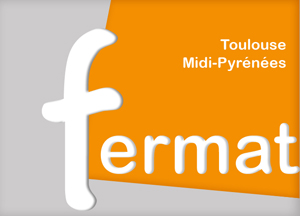A numerical study and physical analysis of an Airbus A3XX-type morphing wing in the transonic regime using Organised Eddy Simulation turbulence modelling at a high Reynolds number.
Jean-Baptiste Tô
Mercredi 27 Octobre Amphi Nougaro à 14 h 30
Voir la soutenance en live ->Le lien de connexion
In a world in constant expansion and growth, both economically and demographically, the aeronautics industry faces a pressing need to respond to financial and environmental issues. In 2016, 3.6 billion people used the plane to get around. The International Air Transport Association (IATA)considers that this number could double in 2035 due to an estimated average growth rate of around 3.7% over a period of 20 years. This observation has led many players in the aeronautical world to constantly innovate in order to reduce the environmental impact of commercial flight with a view to reconciling growth and sustainable development. Thus, it becomes essential to explore innovative concepts and ideas borrowed from Nature. It is in this context that the H2020 N° 723402 European Research project SMS: “Smart Morphing and Sensing for aeronautical configurations”, http://smartwing.org/SMS/EU coordinated by Toulouse Institut National Polytechnique/ Institut de Mécanique des Fluides de Toulouse, intervenes. This research project, led by the National Polytechnic Institute of Toulouse, is part of the European Commission’s Horizon 2020 program, and brings together 10 partners from 5 European countries with the goal of developing a new compliant wing concept called bio-inspired and electro-active hybrid morphing.
This approach was partly inspired by bird wings to achieve the same optimal flight. To do so, a continuous deformation is imparted to the wing, modified over time depending on the flight conditions in order to improve aircraft stability, aerodynamic performance and reduce airflow-generated noise sources at all times. It is thus possible to reduce fuel consumption and greenhouse gas emissions. Indeed, the release of carbon dioxide and nitrogen oxides are mainly due to the flame temperature within the combustion chamber of aircraft turbo engines. By reducing the required thrust throughout a plane trip, especially during take-off and cruise, morphing aims to make commercial aircraft a more economical transportation method, based on predictions that such a technology would allow to save up to at least 1% in terms of fuel consumption.
This thesis studies electroactive morphing as an approach allowing the deformation and vibration of specific areas of aircraft wings leading to the improvement of aerodynamic performance in all flight phases and — of most interest here — during cruise, a phase when the flow around the aircraft is transonic which gives rise to compressibility phenomena. This analysis will focus on the understanding and manipulation through morphing of an instability resulting from Shock Wave-Boundary Layer Interactions (SWBLI) in the transonic regime. The use of turbulence modeling approaches and the numerical simulation of the Navier-Stokes equations allow analysing the behavior of this instability under the action of a dynamic deformation of the wing.
The simulations were produced using the Navier-Stokes MultiBlock (NSMB) code, as well as the Organised Eddy Simulation, a turbulence modeling approach that accounts for the formation and development of coherent structures and their interaction with the chaotic and random turbulence background.
The simulation results allow highlighting the importance of different classes of coherent vortical structures in the dynamics of SWBLI. They also exhibit feedback mechanisms that enable the manipulation of the resulting flow instability using electroactive morphing. Consequently, several deformation modes and vibration frequencies from 100 Hz to more than 800 Hz have been investigated and coupled with wind tunnel studies as part of the SMS project. This parametric study and the resulting discussion show that the use of specific frequencies in the near trailing edge region can reduce shape drag by means of the aforementioned feedback effect that acts on decreasing the strength of the SWBLI. The lift to drag ratio is also found to be considerably increased for these same deformation frequencies. This suggests the possibility of using high-frequency morphing during cruise to improve the aerodynamic performance of commercial aircraft.





